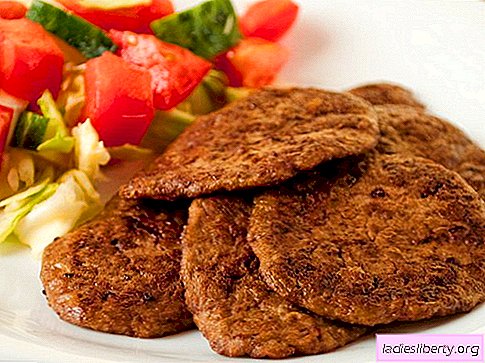
Any load, whether cardio or weight training, depending on the mode of implementation, contribute to weight loss, reducing the amount of subcutaneous fat. Intensive workouts extract subcutaneous fat to provide the energy needed to perform workouts.
For weight loss, it is important to follow certain requirements, both when running and performing strength exercises, otherwise you will get the opposite result - an increase in muscle mass without reducing fat, an increase in speed when running, or just a general strengthening of the body.
First you need to understand how these stresses affect weight loss.
The Impact of Running on Fat Burning
Running refers to aerobic exercise, for which an important condition is the access of oxygen to the cells of the body, making oxygen the main fat burner in the process of losing weight. Also, when running, the heart trains to a greater extent, blood circulation improves, and the pulse rises. Heart rate is a major factor in proper and effective fat burning.
For each person, you can calculate an individual pulse zone, in which fats, and not muscles, will be burned. Too high a pulse will overload the cardiovascular system, and a low one will help to improve overall well-being, but not a single case will affect fat burning.
The heart rate zone necessary for burning fat varies from 60-70% of your own maximum allowable heart rate.
To calculate your maximum, you need to take away your own age from 220 beats per minute (critical pulse rate for a person) - this will be 100%.
For example, 220 - 40 = 180 bpm
Next, we calculate the individual heart rate zone:
180 * 0.7 = 126 beats / min - the upper limit of the pulse
180 * 0.6 = 108 bpm - lower bound
Having obtained these indicators, it is necessary to run in this range, otherwise you will not achieve positive results in losing weight. Therefore, you need not only to run at a pace that is comfortable for yourself in the park, or not to leave the treadmill for hours, the main thing is to observe the correct pulse.
What happens when running?
The first 20 minutes from the start of the run, the body expends glycogen (a simple carbohydrate) from the muscles and liver to get energy, only then the fats are destroyed. For weight loss, it is important that the workout is not too short.
The optimal duration of a run is 40-60 minutes. Subject to the necessary heart rate zone, fats will burn in the second half of the workout.
But as soon as the training is over, and the pulse drops to normal, fat burning will stop.
Running, like other types of cardio workouts, is an effective and easy way to lose weight, but only if you monitor your heart rate. The pulse can be checked in the process by probing the wrist or carotid artery. After calculating the pulse for 6 seconds, multiply the resulting number by 10 - get the number of beats per minute. If necessary, add or lower the pace if the heart rate is not within the required limits.
We advise you to read the rules of running for weight loss.
How do weight training affect weight loss?
There are differences between cardio and strength training. In exercises with equipment, the main role is no longer played by the pulse, but by the load mode. This means that for weight loss the body must work in a state of endurance. This mode starts when more than 15 repetitions of each exercise are performed in one approach. When training with a large number of repetitions, the process of burning fat necessary for energy is included, which does not happen with small amounts of repetitions.
For example, 4-6 reps increase muscle strength, and 8-12 reps increase muscle mass. From this it follows that for weight loss it is necessary to increase endurance by performing 15-25 repetitions depending on the working weight.
What happens during weight training?
As with running, after using glycogen for energy, after 20 minutes, fats come into force as fuel. Power loads should be quite intense, it is necessary to keep a certain pace. More time is devoted to muscle contraction, and much less to rest.
Such training may be circularin which exercises are performed on all muscle groups alternately and without rest. Can also perform super setswhen two exercises for one muscle group are performed in a row without rest, and so 3-4 sets per workout
Read the rules of training for weight loss (for men).
During contraction, muscle fibers undergo minor damage, the restoration of which requires more time, as well as additional energy costs. This means that after the cessation of strength training, fat burning continues for several hours before recovery. To recover, the body spends extra energy to get nutrients from food.
This also indicates that you should not starve after training.
Products containing proteins and carbohydrates, upon receipt after training for forty minutes, on the contrary, will contribute to further weight loss.
Conclusion
When choosing a load that promotes weight loss, do not neglect strength training, afraid to gain muscle mass. To avoid this, you need the correct mode of exercise - performing a large number of repetitions. Muscle contraction in this case will not increase weight, but only contribute to a decrease in subcutaneous fat both during and after training, which does not happen when running.
Seeing the advantage of strength training over cardio, it is unequivocal to say that running is less effective. After all, there are opponents of the gym, and if running in the park gives a lot more pleasure - this way of losing weight will be much more effective.
The best weight loss method is to alternate between these two workouts.
While the muscles will recover after a power load, it's time to train the cardiac system. Thus, a change of occupation will constantly support the process of fat burning, without overworking the muscles and nervous system.











